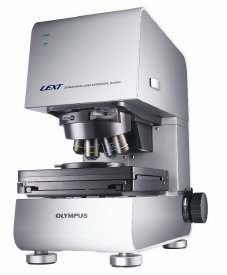May 23 2011
Olympus will be exhibiting at the upcoming European Society for Precision Engineering and Nanotechnology (EUSPEN) 11th International Conference and Exhibition in Lake Como, Italy from 23 - 26 May 2011. With expertise in the field of optical metrology, Olympus will display its LEXT OLS4000 confocal laser scanning microscope (CLSM) at booth 1314, as well as present an informative poster and participate in the commercial session.
As an influential community linking industrialists, researchers and respected authorities, EUSPEN consists of an in-depth conference, exhibition, poster session and commercial session. As a result of this multi-faceted forum, users can adopt ideas to ensure that their dimensional measurements and surface texture analyses are accurate and reliable, as well as being compliant with current industry standards.

As part of the poster session, Mr Hitoshi Suzuki, Olympus Corporation, Japan, will detail his findings on 'A study of surface measuring limitation on a laser scanning microscope by the examination of response properties of surface texture and slope detection on a ruby sphere sample'. Since identifying and rejecting doubtful measurements is key to maintaining accuracy, instruments need to be able to produce precise and repeatable results. Accuracy when using a CLSM depends on the numerical aperture (NA) of the objective lens; steep slope measurements up to 80º can be accurately obtained when using a 0.95 NA lens.
During the commercial session, which will take place on 24 May in the Plenary from 14.00 to 15.45, Olympus will also give a brief presentation on its capabilities within optical metrology. Mr Hitoshi Suzuki will discuss Olympus's abilities as one of the biggest and most respected providers of microscope systems and accessories for observing surfaces, as well as analysing materials and nanoparticles.
The Olympus LEXT OLS4000
The LEXT OLS4000 CLSM microscope incorporates a 405 nm laser and dual pinholes, which operate simultaneously to ensure that the system provides outstanding clarity and resolution, as well as enabling steep slope detection up to 85º. As a result, even the most complex surface topologies can be imaged and analysed with high resolution and clarity.